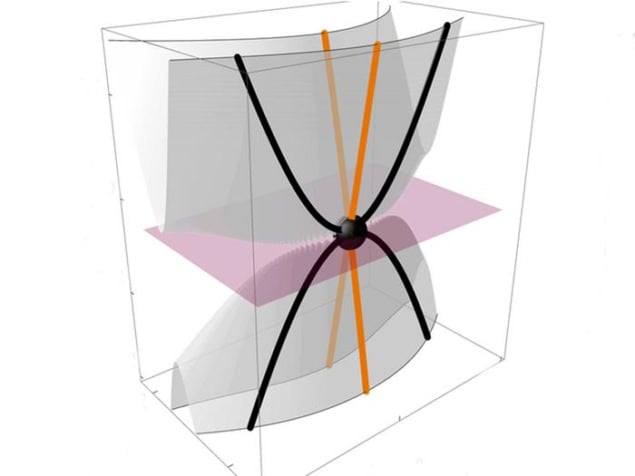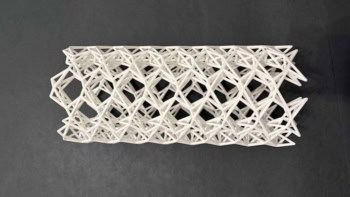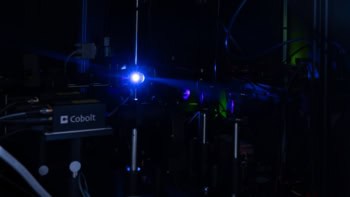
Physicists at Penn State and Columbia University in the US say they have seen the “smoking gun” signature of an elusive quasiparticle predicted by theorists 16 years ago. Known as semi-Dirac fermions, the quasiparticles were spotted in a crystal of the topological semimetal ZrSiS and they have a peculiar property: they only behave like they have mass when they’re moving in a certain direction.
“When we shine infrared light on ZrSiS crystals and carefully measure the reflected light, we observed optical transitions that follow a unique power-law scaling, B2/3, with B being the magnetic field,” explains Yinming Shao, a physicist at Penn State and lead author of a study in Physical Review X on the quasiparticle. “This special power-law turns out to be the exact prediction from 16 years ago of semi-Dirac fermions.”
The team performed the experiments using the 17.5 Tesla magnet at the US National High Magnetic Field Laboratory in Florida. This high field was crucial to the result, Shao explains, because applying a magnetic field to a material causes its electronic energy levels to become quantized into discrete (Landau) levels. The energy gap between these levels then depends on the electrons’ mass and the strength of the field.
Normally, the energy levels of the electrons should increase by set amounts as the magnetic field increases, but in this case they didn’t. Instead, they followed the B2/3 pattern.
Realizing semi-Dirac fermions
Previous efforts to create semi-Dirac fermions relied on stretching graphene (a sheet of carbon just one atom thick) until the material’s two so-called Dirac points touch. These points occur in the region where the material’s valence and conduction bands meet. At these points, something special happens: the relationship between the energy and momentum of charge carriers (electrons and holes) in graphene is described by the Dirac equation, rather than the standard Schrödinger equation as is the case for most crystalline materials. The presence of these unusual band structures (known as Dirac cones) enables the charge carriers in graphene to behave like massless particles.
The problem is that making Dirac points touch in graphene turned out to require an unrealistically high level of strain. Shao and colleagues chose to work with ZrSiS instead because it also has Dirac points, but in this case, they exist continuously along a so-called nodal line. The researchers found evidence for semi-Dirac fermions at the crossing points of these nodal lines.
Interesting optical responses
The idea for the study stemmed from an earlier project in which researchers investigating a similar compound, ZrSiSe, spotted some interesting optical responses when they applied a magnetic field to the material out-of-plane. “I found that similar band-structure features that make ZrSiSe interesting would require applying a magnetic field in-plane for ZrSiS, so we carried out this measurement and indeed observed many unexpected features,” Shao says.
The greatest challenges, he recalls, was to figure out how to interpret the observations, since real materials like ZrSiS have a much more complicated Fermi surface than the ones that feature in early theoretical models. “We collaborated with many different theorists and eventually singled out the signatures originating from semi-Dirac fermions in this material,” he says.

Fermionic quasiparticles caught slowly ‘disappearing’ for the first time
The team still has much to understand about the material’s behaviour, he tells Physics World. “There are some unexplained fine electronic energy level-splitting in the data that we do not fully understand yet and which may originate from electronic interaction effects.”
As for applications, Shao notes that ZrSiS is a layered material, much like graphite – a form of carbon that is, in effect, made up of many layers of graphene. “This means that once we can figure out how to obtain a single layer cut of this compound, we can harness the power of semi-Dirac fermions and control its properties with the same precision as graphene,” he says.



